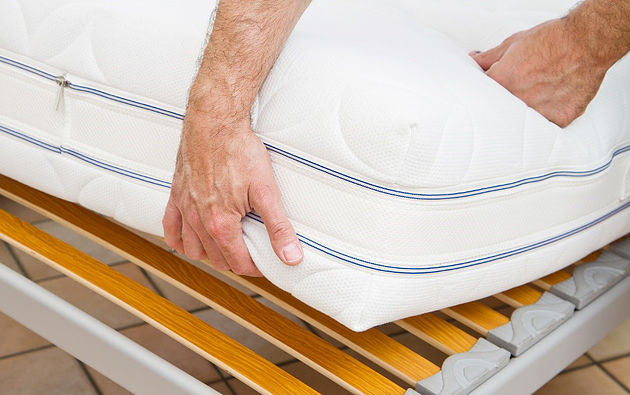This is why when purchasing a new mattress or bedding, consider getting one of the new low-allergen, low-toxicity types that have now become standard on the market. Mattress stores throughout San Diego have the full range of hypoallergenic bedroom furnishings to safeguard your family’s health.
When you consider that you spend over a quarter of your time in bed, it is not surprising that there is a large amount of wear on mattresses and their supportive value reduces over time. If you often awake with lower back pain or stiff joints that disappear after you move around for a while, it is probably because you need a new mattress. Experts now recommend that mattresses be changed every 8 to 10 years.

Fabric types
If you are allergic, consider sleeping on memory foam mattresses or latex mattresses that are wrapped in silk or cotton batting. While coil and spring mattresses are said to be good for the back, their structure allows dust mites, mold and mildew to easily accumulate.
Anti-allergy bedding also comes in a variety of fabrics. You can choose from cotton and or polyester, silk and woolen weave, organic and non-organic varieties. Some fabrics are softer and have a smaller pore size or openings in the fabric weave. This is a good indicator for how well the bedding will not retain or attract allergens. Both pore size and allergen sizes are measured in microns. As a rule of thumb, the smaller the pore size, the more allergens are blocked. The most common fabric for reducing allergies under 10 microns.
When deciding on what basic size, shape, comfort level and price of your mattresses, consider looking at any mattress sale from San Diego stores, such as Mattress Sale Liquidators, and to learn as much as you can about the different features and fabric types. While it’s good to learn about these in theory, note that there is nothing better than touching and lying down on the mattress to see for yourself.
Sources:
ALLERGY BEDDING BUYING GUIDE, achooallergy.com
Hypoallergenic Bedding Myths, allergyconsumerreview.com
